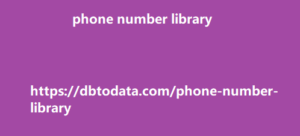There are so many copies out there that are meant to rank well in the search results but then it flops. Ever had that experience with your team? where you failed. As many consumers nowadays are searching on the web whenever they need something. SEO copywriting is very critical for you and your business, it helps you make sure that your website and content will be seen by the target market. What is SEO copywriting? Let us first define what is SEO and copywriting. SEO is the process of improving your website’s ranking in the search results, through practices that are based on data and guidelines.
On the other hand, copywriting is the craft
of creating persuasive messages that will inspire people to take action. Now, what is SEO copywriting? SEO copywriting is the combination of both, writing persuasive content that is not only engaging to your readers but also recognizable by search engines as relevant and value-giving when it gets crawled by it. In simpler terms, SEO is the science, and copywriting is the art. Having a perfect balance of both ‘the science’ and ‘the art’ can definitely make you outrank your competition in the search results. How beneficial can SEO copywriting be? A great SEO strategy involves well-written and searchable content.
From your landing pages, blog posts, or even
your ‘thank you’ pages, all those pages need copywriting that is on point. This is to ensure that your website and its content will be visible to users browsing the search engine results page (SERPs.) By utilizing SEO copywriting, you can: Increase your website traffic Create more leads Build your authority in your industry or niche. So here’s the thing – you may be left in the dark with the wrong things your team might be doing when it comes to SEO copywriting, right? No problem – I’ve done the work and identified the most common problems and mistakes you could commit to prepare you to have the best SEO copywriting practices for 2023: Not Identifying your Target Audience Disregarding Keyword Research Failure in Organizing your Ideas Forgetting to Optimize your Content for SEO Ending with an Uncompelling Message Now that I got that out of the way, I’ll clarify what these really mean for you on the points below as you read on: Not Identifying your Target Audience Before anything else, you need to identify who you are writing your content for.
Who are they? What matters to them?
What are they looking for? How can you help them? To help you answer these questions, try putting yourself in their shoes and think like how they think to find out their pain points. It shouldn’t be hard for you since it is the market you desire to serve. Through this, you could create the perfect persona that will be your guide for the rest of your SEO copywriting efforts. Using this persona you created as a guide, generate topic ideas to what questions you think that persona would have. Shortlist the ideas and try categorizing them from the topics that you have a lot to say about down to the topic that you need to do a ton of research on.
From there, you can choose the topic that
speaks to you most and what you afghanistan phone number library think you can give out the most value. Disregarding Keyword Research In order for you to execute SEO copywriting effectively, you certainly need to be smart on your target keywords. These keywords will be a core part of your whole SEO strategy; as you’ll be integrating them all throughout your content. But also know that it’s not about putting multiple keywords inside the body of your content, as this can hurt your reputation/ranking in Google’s eyes. This method is known as keyword stuffing and it is already considered a malpractice in the SEO industry.
Some experts even go so far as to say
that it is a strategy for black hat SEO. Going back to our first point, put yourself in your target market’s shoes and think from their perspective. And through that, you now have to narrow down the list of keywords you want to focus on. Now you have to check if those keywords have enough users searching for them. There are a lot of tools that can help you with this process, such as SE Ranking’s Keyword Research Tool. SE Ranking can tell you how much monthly search volume a certain keyword has. This helps a ton in allowing you to lock in the keywords you will center your SEO copywriting efforts around.
There are four types of search intent in SEO:
Informational – to get information interactive value for leads (who, what, when, where, why, and how) Transactional – to purchase a product/service (e-commerce) Commercial – to buy in the near future (reviews/comparisons) Navigational – to go to a specific website (brand names) Tip: The best way to know the ‘search intent’ of a keyword is to search it on Google and see what type of content or suggestions shows on the search results page. As an SEO copywriter, your main goal is to give solutions or answers to users searching on the web, that’s why your content should be suited to the intent of your keywords.
So that whenever users search for it, you will
be seen as the most value-giving brazil data website and crush the rankings in the search engine results page (SERPs.) Failure in Organizing your Ideas After gathering the needed information about your target audience and keywords, it is now time to write. In SEO copywriting, the flow of your content is very important. Bored readers are not good for you. Be clear, concise, and straight to the point. Creating an outline can really help you construct the structure of your content. Here’s an example of how you can outline your idea: Title (Headers) Intro Paragraph Bulleted list with explanation 1 Bulleted list with explanation 2 Bulleted list with and Closing Paragraph This makes it so much easier to construct the foundation of all the topic ideas you gathered on one page.

